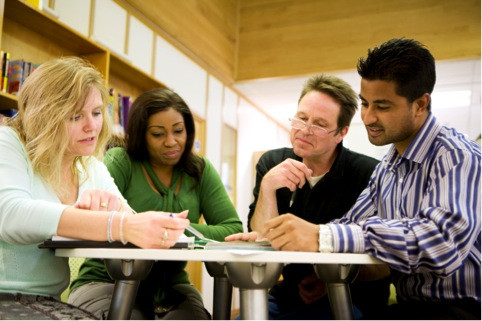Evaluation isn’t just good for creating knowledge or informing investments; at its best, it’s a tool for strengthening the community itself. Including community members in decisions about an evaluation—such as measures of success, culturally appropriate ways to collect data, and meaning and implications of findings—can improve the community’s capacity to effectively manage and control change.
In our work at Community Science, a research and development organization dedicated to building healthy, just, and equitable communities, we see how evaluation:
- Supports evaluative thinking
- Generates information for decision-making
- Builds capacity for using data for advocacy
- Upholds accountability
- Promotes and monitors progress towards social justice and equity

Supporting evaluative thinking
Evaluation provides the opportunity for all members of the community, regardless of power or status, to build a learning community that works to collectively solve problems. This is formally known as evaluative thinking: the cognitive process of asking questions, explicating beliefs and assumptions, learning and reflecting, and developing new understanding to make informed decisions and prepare for action. When a group of people repeatedly apply and practice this cognitive process, it provides the opportunity for establishing shared understanding, developing relationships, transforming disagreements and conflicts, engaging in mutual learning, and working together toward a common goal—all ingredients for creating a sense of community.
Generating information for decision-making
Evaluation generates information that we can use in decision-making, including how we can improve a strategy or program, or what new programs or services the community needs. Evaluation also can identify training or technical-assistance needs. For example, findings may reveal that a nonprofit has difficulty reaching the desired number of beneficiaries, because of its limited knowledge and skills in strategic communications or because of culturally inappropriate outreach methods. These kinds of information can help funders enhance the capacity of nonprofits in a community, which in turn can strengthen that community.
Building capacity for using information for advocacy
Communities can use information produced by evaluation to advocate for change. For instance, one community survey we used in a community-building project showed that families were concerned about their children’s safety when walking to school, because there were no sidewalks in a certain area. Community members mobilized and organized around this information, and petitioned their district representative to advocate for constructing a sidewalk. This process requires that community members work together to make joint decisions; pool their expertise and resources; conduct a power analysis to uncover and make known the policies, procedures, and practices that perpetuate injustice in institutional structures and systems; and act collectively to advocate for the change. In another example (see “All in Favor: Using Data in Advocacy Work”), an evaluation used data to show the link between out-of-school time and juvenile offenses, and to advocate for after-school programs.
Upholding accountability
Data can also be a powerful tool for holding program managers, community leaders, decision makers, and policymakers to account. For example, communities can use state report cards on health disparities to hold elected officials to their promise of better health outcomes. Philanthropic organizations similarly use dashboards to hold program staff accountable for achieving desired grant outcomes. Evaluation contributes to generating the information that forms the basis for these types of tools, and in the use of these tools, encourages linkages between people and institutions, and between formal and informal institutions.
Promoting progress towards social justice
 Community members working together to discuss and interpret information generated by evaluation. (Photo courtesy of Community Science)
Community members working together to discuss and interpret information generated by evaluation. (Photo courtesy of Community Science)
Evaluation plays a role in promoting social justice and equity. This means accounting for the political, economic, social, and cultural factors that contribute to the inequities—the unfair and avoidable conditions—that prevent people in a community from achieving their best. Evaluators can help prevent harm and the perpetuation of inequity by convening stakeholders (such as funders, policymakers, community leaders, and residents) to contextualize and discuss the data. These gatherings provide the opportunity for people to listen to one another, understand what they can and cannot conclude from the data, and work together to promote social justice and equity.
These five observations from our work are very much aligned with the five guiding principles of the American Evaluation Association. While we believe evaluation undoubtedly plays a role in strengthening communities, it is important to note that its success in doing so is inherently tied to the strategy it’s evaluating. Evaluations strengthen communities when they are part of community change initiatives that share a similarly strong commitment to learning, using knowledge, and practicing evaluative thinking in its planning, operations, and stakeholder engagement.
Support SSIR’s coverage of cross-sector solutions to global challenges.
Help us further the reach of innovative ideas. Donate today.
Read more stories by David M. Chavis & Kien Lee.

